If the British have three food traditions that the rest of the World tag us with, they are fish and chips, curry and the English Sunday roast dinner with all the trimmings. So much do the British love their Sunday roast, the French are apt to call us ‘Le rosbifs.’ This strangest of insults dates back to the 18th Century, originally as a deferential nod by the French to the fact that the Brits had nailed the cooking of beef. So, like ‘Le weekend’ (which infuriates French linguists no end), le rosbif became part of the French language. Then, in 1850, the British author William Makepeace Thackeray wrote in The Virginians, “Only my white cockade and coat had saved me from the fate which the other canaille of Rosbifs had deservedly met with.” In this usage, Rosbifs was being used to describe all Englishmen, and from here on we have the term being used as an insult. However, the English take this on the chin because we call the French ‘frogs,’ and, thanks to the scything humour of the US cartoon show The Simpsons, we also have ‘cheese-eating surrender monkeys.’
The English roast dinner is actually not terribly English at all. Britain, as it sits in the middle of the sea, surrounded on three sides by the curved arm of Europe, has been invaded more times than Jenna Jameson. This makes us a mongrel nation that has soaked up influences and traditions from all over the place. It was the Romans who gave the Anglo-Saxons the multi-modal cooking methods (sauté, simmer, roast etc.) that makes it possible to produce a slap-up roast. And cooking methods have moved on from there too. If you really want to nail the cooking of a beef joint in 2017, then you have to look to the technique of sous vide.
The technique of slow-cooking vacuum packed (‘under vacuum,’ or ‘sous vide’) food at low temperatures is rapidly gaining traction. Restaurants have been doing it for years, generally as a follow-on from work by Dr Bruno Goussault in 1971. This technique has now made it into domestic kitchens, and all of the people I know who are really into their cooking have a sous vide rig. Goussault is currently the chief scientist for Cuisine Solutions. The Cuisine Solutions web site claims that Goussault invented and pioneered the technique of sous vide cooking. Goussault now makes good coin teaching chefs the art of sous vide, and his organisation puts him at the top of the family tree of sous vide chefs.

However, as might have guessed, The Nosey Chef has done a bit more poking around on the origin of sous vide and has found a bit more back story. Goussault may have made sous vide a practical means of cooking food, but he had clearly done his reading. Back in 1799, the American-born, British physicist Sir Benjamin Thompson (aka Count Rumford), a specialist in thermodynamics, theorised that it might be possible to cook meat at a low temperature for a long time to achieve a perfect level of doneness. Thompson is on record as having cooked one spectacular shoulder of mutton, which he wrote about it in one of his essays.

In the article, Thompson describes a wild moment of kitchen experimentation in which he he put a tough, old sheep joint in a drying machine running at 212˚F. After 3 hours, the Count prodded the mutton and found it to be woefully undercooked. Pissed off and angry at his apparent failure, he went home, and left his shoulder of mutton to the mercy of the cook maids. Critically Thompson left the joint in the dryer. The maids came in the next day, and removed the joint from the machine and started to work out how to recover its dignity for cooking. Unbelievably, they found it to be perfectly cooked.

Sadly, it seems that Sir Benjamin didn’t take this idea any further, and never built a catering-specific sous vide rig. So, the technique of low temperature cooking (which at this point did not include any vacuum packing, so was not technically ‘sous vide’) languished untested in the scientific literature for 150 years.
The story of sous vide is then picked up in the 1970s. Bruno Gaussault started playing with sous vide at around the same time as Georges Pralus of the three-Michelin-starred Troisgros restaurant in Roanne, France. Pralus was struggling with the fact that foie gras, which was and remains eye-wateringly expensive, would shrink to half its size under cooking and become deformed. Pralus tried wrapping his foie gras in plastic to get rid of the air, and then cooking it in a water bath. Of course, that worked, and he invented sous vide independently of Goussault.

Both chefs tooted their own sous vide trumpets for a while before joining forces in the 1980s to get sous vide approved by the French health authorities as a certified means of not killing people.
The Nosey Chef has already written on the science of sous vide and how to get started for the least outlay in our article on venison steak. It simply leaves me to say that topside of beef sous vide is the greatest damn beef a human being can eat, but it has one drawback – you need to think about how the chuff you are going to get a gravy when your meat is trapped in a warm condom. To this end, we suggest roasting beef offcuts and bone in a roasting tin with onions and using the caramelised residue from that to make a traditional pan gravy.
In the UK, the traditional accompaniment to roast beef is Yorkshire puddings. Back in the days of widespread poverty and serfdom, Yorkshire puddings were cooked as a means of soaking up and using beef or mutton dripping that would fall from a meat joint as it was cooked. The pudding ingredients, usually flour and eggs, were placed in a tray below the meat and baked as the fat dripped into the batter. Butter was added to start the process, and the pan was regularly shaken to combine the meat fat with the other ingredients.
Traditionally, Yorkshire pudding was served as a first course to bulk up the diners on cheap ingredients to make the expensive meat go further. In modern British cooking, ‘Yorkies’ are served alongside beef. It is generally unusual to serve Yorkies with meat other than beef, although many restaurants shrug this tradition and serve them with chicken et al.
Getting a Yorkshire pudding to rise can be a bit of a dark art. The most critical thing is that the batter is poured into hot oil. Jamie Oliver adds baking powder, which means he may self-immolate if he actually enters Yorkshire. An extra egg can also help with the rise. The Royal Society of Chemistry has stated that a Yorkshire pudding is not done if it does not rise to 4 inches height. The method we use comes from Lee Frost of WH Frost Butchers in Chorlton, Manchester. This uses a volumetric method, and it is completely foolproof.
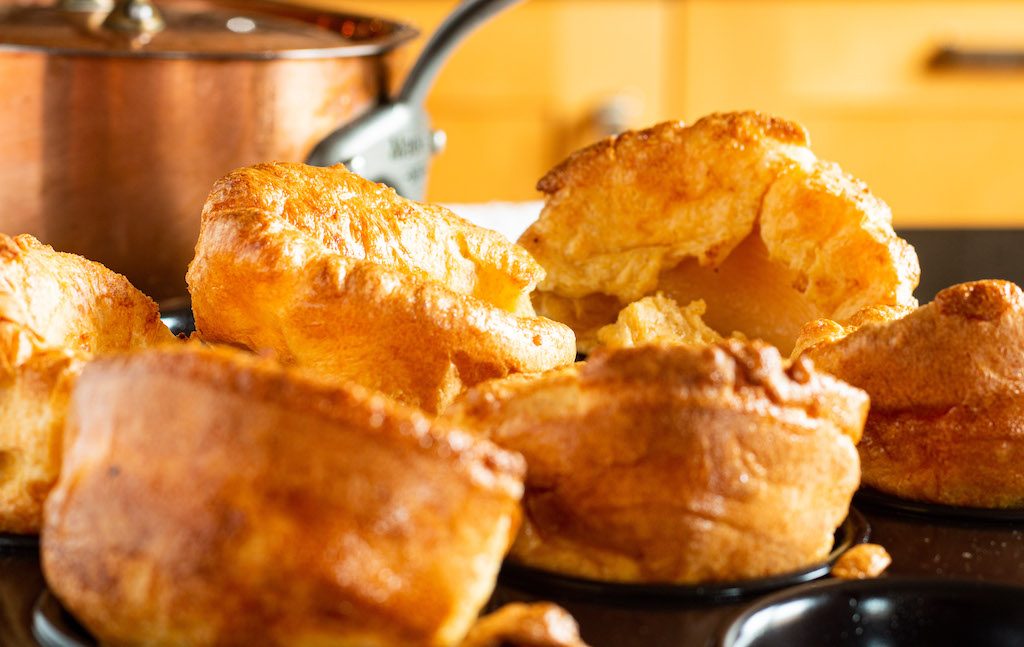
Our beef was supplied by Mac Burnham’s, 5 High St, Chapel-en-le-Frith, High Peak, Derbyshire SK23 0HD, UK.
In the United States, you can order foods ready-prepared for sous vide from Ajay Narain and Marc Rasic of First Chop. It was they who put us onto the tale of Count Rumford.
Topside of beef sous vide with Yorkshire puddings
Ingredients
- For the beef:
- 6lb beef topside roasting joint
- A collection of fresh, woody herbs (e.g. rosemary, bay and thyme)
- 1 slug of olive oil
- Freshly ground black pepper and sea salt
- 50g butter
- For the Yorkshire puddings:
- 3 eggs and then the same volume in milk and the same volume again in plain flour
- A large pinch of salt
- Beef dripping or goose dripping (see notes)
Instructions
For the beef, set a sous vide apparatus to 56˚C.
Heat 25g butter in a frying pan until foaming. Season the beef and sear the it on all sides in the hot butter. Place the beef in a vacuum bag with the herbs and a drizzle of olive oil. Vacuum seal and place in the water bath for at least 7 hours, ideally 9 hours.
For the puddings, heat an oven to 200˚
Combine all the batter ingredients and whisk by hand until smooth. Rest the batter for as long as is practical.
Remove the beef from the bag. Heat another 25g of butter in a frying pan and re-sear the beef until you have a good browned crust. Do not be tempted to use the bag juices – they will be rank.
Rest the beef for 15 minutes under foil before carving.
Heat blobs (about 1 tsp each) of the the dripping in the wells of a muffin tin until very hot. Pour in the batter to two thirds depth. and bake in the oven for 15–20 mins. Add a few minutes longer if the puddings need more colour.
Serve the beef carved with the puddings. See notes above for gravy.
Notes
We have had some rightful criticism here over the need to state where the drippings come from. If you sous vide beef, then you cannot collect drippings to cook your Yorkies in. In any case, a topside or silverside will not really yield enough drippings to provide the fat for the puddings. But, you can buy the dripping from most supermarkets. Neutral oil will do. Goose fat is a level up. Beef dripping is where you need it to be if you are not catering for someone who does not eat red meat, as I frequently do.

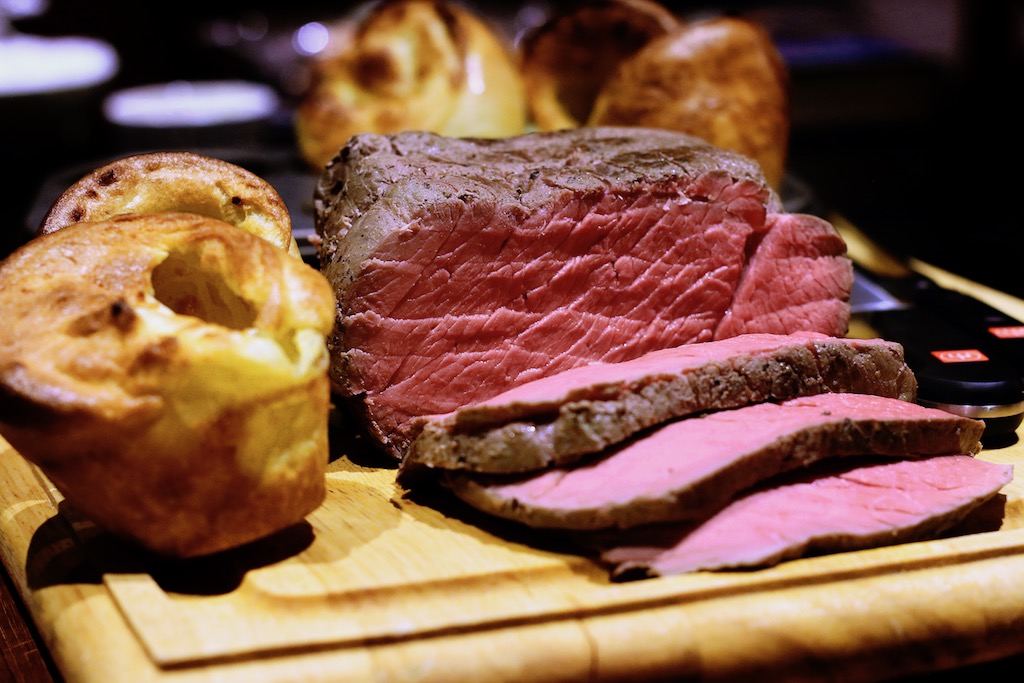


 (332 votes, average: 3.61 out of 5)
(332 votes, average: 3.61 out of 5)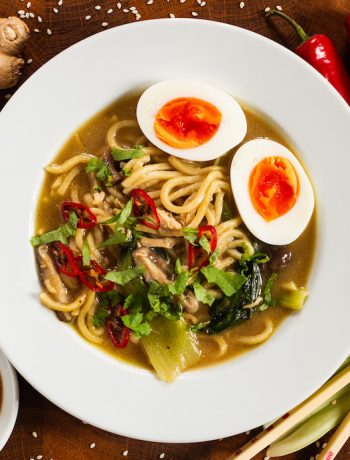
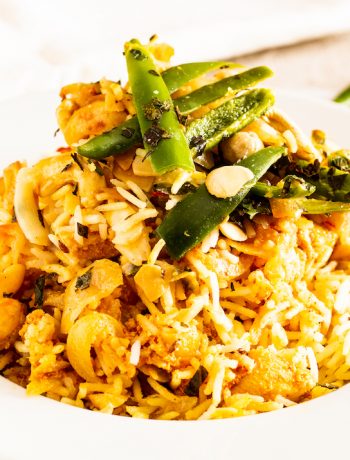
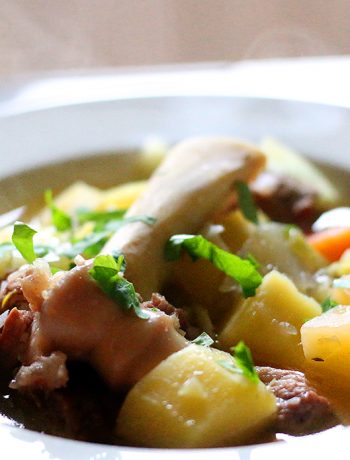
31 Comments
Rodger Lodger
12/03/2018 at 4:29 pmI searched for how to get drippings for Yorkshire Pudding if you sous vide. The answer given here is to use “neutral oil” (?) or drippings. Not helpful!
Nigel Eastmond
12/03/2018 at 9:39 pmHi Roger. So, I tend to use neutral oil because my wife does not eat four-legged animals. Many recipes advocate beef dripping for Yorkshire’s, and this can be bought from a proper butcher. They sell it in pots. Of course, you could make it by doing the odd transitional roast, and reserving the strained fat.
Nigel Eastmond
03/06/2019 at 9:15 pmHi Roger. You can just buy beef dripping. It is actually available in Tesco. The point of not doing the Yorkies in the dripping-filled beef undertray is that you can serve them to a non red meat eater if you are cooking for a bunch of people. Also, cooking them in the undertray risks them never rising due to constant overhead bombardment from red-hot droplets. It is better to do them separately, in which case you can choose the fat. Neutral oil is OK. Goose fat is better. Beef dripping is the nads.
Rodger Lodger
12/03/2018 at 4:31 pmOK, I find out “neutral oil” is a common term, but where do the “drippings” come from if you sous vide?
Nigel Eastmond
12/03/2018 at 9:42 pmThe article explains this a bit. Yes, if you sous vide, you do not get any pan juices to make a gravy. To get round that, I ask my butcher for some bones and offcuts, and roast those separately with some onion to get the required schmoo to make beefy onion gravy. For actual dripping in any meaningful quantity, you can buy that (see comment above). Certainly do not me tempted to make the bag juices into a jus as the result is absolutely terrible.
Aaron Daniels
16/10/2018 at 11:22 pmShould I reduce the time if it’s only a 3lb joint
Nigel Eastmond
17/10/2018 at 7:41 amHi Aaron. Sous vide is all about getting the meat up to temperature and holding it there. Once it is at the right temp, then the time no longer really matters. That said, halving the weight will let you get there quicker, but not much quicker because it is not the total weight at issue here, rather the total diameter. For a 3lb joint, I would imagine it would do it in 5–6h. There is a handy guide here (but it does not include weights): https://www.chefsteps.com/activities/sous-vide-time-and-temperature-guide. This guide includes dimensions: https://cdn.shopify.com/s/files/1/2406/9297/files/times_and_temps.pdf?628194122425538558, but is very steak oriented. If it were me, I’d look at 6h.
Sue
23/07/2019 at 3:30 pmHi Nigel, I am cooking for 40 people at the weekend and want to serve rare topside as part of the meal, Do you think your recipe will work for serving cold and slicing on a meat slicer?
Nigel Eastmond
23/07/2019 at 3:46 pmHi Sue. This absolutely will work. If your joint is large, you need to make sure you give it enough time. In general, beef for cold cuts needs to be silverside or topside and not terrifically fatty. If there is too much marbling, the cold fat will be a bit nasty.
Have a lovely meal.
Sue
25/07/2019 at 5:36 pmHi again Thank you, I am using topside, I have 2 joints around 3 kg each, shall I still cook for the 9 hours? Or maybe a little longer? I will need to cut them in half to go in my pan
Nigel Eastmond
25/07/2019 at 6:22 pmHi Sue, this will get you there https://www.sousvidetools.com/calculator/. So, if you have 4×1.5kg cuts in separate bags, then you need to go for about 5h because you are looking for even heat penetration to the centre of each piece. Set the bath temp to control doneness.
IMA
04/11/2019 at 7:29 amis it the same volume as the eggs in both milk and flour please?
Nigel Eastmond
04/11/2019 at 9:17 amYes. Exactly that. Measure the egg volume. Then, it is easiest to measure the flour volume in a second jug (it is had to measure the flour volume once it is mixed with the liquid). Then add the same volume in milk to the eggs, add a pinch of salt and then whisk the flour into the milk and eggs until smooth. No recipe needed.
Simon Bisson
29/11/2019 at 3:26 pmMy butcher normally wraps my joint (corner cut topside) with fat. I assume I don’t need that to cook sous vide? How well done will the beef be at 56C? Thanks.
Nigel Eastmond
29/11/2019 at 3:31 pmHi Simon. 56˚C will give you *just* medium. Regarding the fat, you have some choices. If you take it off, you can use it as dripping to cook off a soffrito as a base for a stock sauce, which can be thickened and strained to make a great ‘gravy.’ If you leave the fat on, then it will partially cook in the souse vide process, but you will need to give it a bit longer in the post-cook sear to make sure you have melted it adequately.
What is true is that the fat will not melt down into the meat like it does in an oven.
Does that help?
gareth reilly
12/12/2019 at 4:48 pmCan I cook this in advance and reward the next day
Nigel Eastmond
12/12/2019 at 5:21 pmFrom a technical standpoint, yes, but there may be little practical point. You see, you are cooking to reach a set internal temperature. That takes all that time to achieve. If you take the bag out of the pot and let it cool, then you will need to spend a load more time getting it back up to temperature – roughly exactly the same as the original cooking time.
From a food safety standpoint, you are usually going to be OK because it is not normal for bacteria to be in the centre of a cut of red meat, and the high temperature sear will kill the ones on the outside. But, you are recycling the temperature of that meat through the 38˚C Goldilocks zone for bacterial expansion three times. So if anything has contaminated the meat, then it will have three chances to have babies rather than one.
If you are in a funk about timings, then the best move (I have done this) is to assemble the sous vide the night before and just leave it, loosely covered with foil to prevent water loss to evaporation. Once the water and the meat hit the target temperature, it simply cannot cook any further. That would work for bigger joints where you are not colossally exceeding the required time in the bath. For smaller joints, you could set up the sous vide and put the plug on a socket timer to start the cooking early in the morning.
Does that help at all?
David Rodwell
28/12/2019 at 5:02 amSo with the juices in the bag, are they ‘rank’ because of the added herbs? If the herbs were left out and it was just seasoned with salt, pepper and maybe some powdered English mustard powder, could the juices then be used? Otherwise it seems a waste of juices that would normally be used cooking the conventional way.
Nigel Eastmond
28/12/2019 at 6:09 amThese juices have been cooked at quite a low temperature. Whether that is a factor or not I am unsure, but when that liquid is heated in an attempt to make a sauce or gravy, the juices tend to separate and turn into grey/brown lumps that look very poor indeed. There may be a way to wrangle a sauce from them, but I just serve with a sauce Béarnaise or something made from a demi-glace.
Kevin Cadman
27/04/2020 at 12:51 pmThe bag juices, as you say, are not great for using in your sauces. As you say the low temps of cooking the beef mean you’ll have quite a bit of work to use the juices to help make a decent sauce/gravy – the juices will coagulate and split. Also there is a theory (a good one) that low temp cooking of olive oil doesn’t create a particularly good flavour on the excess oil in bags – the oil on and absorbed into food is a good taste. You can deglaze the pan after searing the beef for a touch of extra flavour (and colour) from the caramelised beef particals.
Regards Yorkies, recipes of old seem to not be as good these days (Gary Rhodes tribute here !), perhaps flour is better refined, milk treated better, maybe egg producing procedures are minutely different. I’ve found the same, equal eggs, milk and flour works spot on – very hot (smoking) oil or fat works. Beef dripping the best without doubt !
Elyss
16/11/2020 at 5:28 pmI have the methods for dealing with the coagulated proteins in heated sous vide juices, depending on what end result I’m looking for:
1. Heat the juices on their own then strain through a paper towel before using in a sauce.
2. Make the gravy/sauce then blitz with a jug/stick blender.
3. Whisk in a little arrowroot before heating. This prevents the juices coagulating at all.
Lottie Hartigan
18/11/2020 at 9:00 amI’d like to try this on Sunday for my in laws. My FIL likes beef medium/well done where as the rest of us like pink and rare. Is there a way of cooking so that the ends are more done than the middle as per a usual roast? Thank you!
Nigel Eastmond
22/11/2020 at 4:01 pmNo, not really. It will completely evenly cool edge to edge and side to side.
Aphra
23/11/2020 at 1:29 amThe best way to do that is to cut a piece off for your FIL, vacpac it separately and bring it to a medium/well done temperature in the bath before dropping the temperature and adding the main piece. Then cook as normal for medium rare. If you’re worried about over-tenderising the smaller piece, take it out and chill it. Drop it back in to reheat an hour or so before the main piece is finished.
Ginger Travis
25/12/2021 at 4:53 amI used your recipe and the beef was amazing! I used my 6 qt Instant Pot Ultra with the sous vide (or custom) settings. My only issue was with the Yorkshire puddings. I found that my oven was not hot enough at 356 deg F (I’m in the US). I have made YP several times and I needed to bump my oven up to 425-450 for them to puff up and brown sufficiently. I also tried using a muffin tin at first and then returned to my trusty popover pan. Thank you so much for a wonderful description of the sous cide process beef…this is exactly what I have been looking for. (I wish I could post the pic of my roast). My family was definitely appreciative of all the work! Thank you, again.
Simon Ambler
19/05/2022 at 9:54 pmHi there.
I’ve got a 2k topside joint and was planning dinner for 12’ish on Sunday, would it be OK to start cooking it just before I go to bed, say about 11pm and would cooking it for 12/13 hours make it a bit more tender?
Simon Ambler
19/05/2022 at 10:02 pmHi there.
I’ve got a 2k topside joint and was planning dinner for 12’ish on Sunday, would it be OK if I started cooking just before I go to bed, say 11pm and also would cooking the joint for 12/13 hours make the beef more tender.
The only joint I’ve cooked this way previously I did for 24 hour at a slightly higher temperature and it turned out extremely tender if slightly over done.
The Nosey Chef
19/05/2022 at 10:05 pmHi, if you set the temperature right, then you can cook it for a week and it will be OK. Pick your done-ness and go for it.
Simon Ambler
20/05/2022 at 4:26 pmHi.
Apologies for the double post, wasn’t sure if it posted or not.
That’s great thanks for the info.
Alan
17/01/2023 at 3:38 pmHi.
I have a 2.3kg jointbof beer (topside) that I want to sous vide on Sunday.
Last time I tried it I did 54 for 14 hrs and it was tough and very bloody.
I know my sous vide is correctly getting to temp so so you think 56 for the time you suggest will be right?
Nigel Eastmond
17/01/2023 at 3:41 pmHi Alan, if 54 was too low for you, then 56 will be bang on. The time is not the issue with sous vide – it is the temperature. So if you are going 14h, then you will be fine at that weight. Good luck.